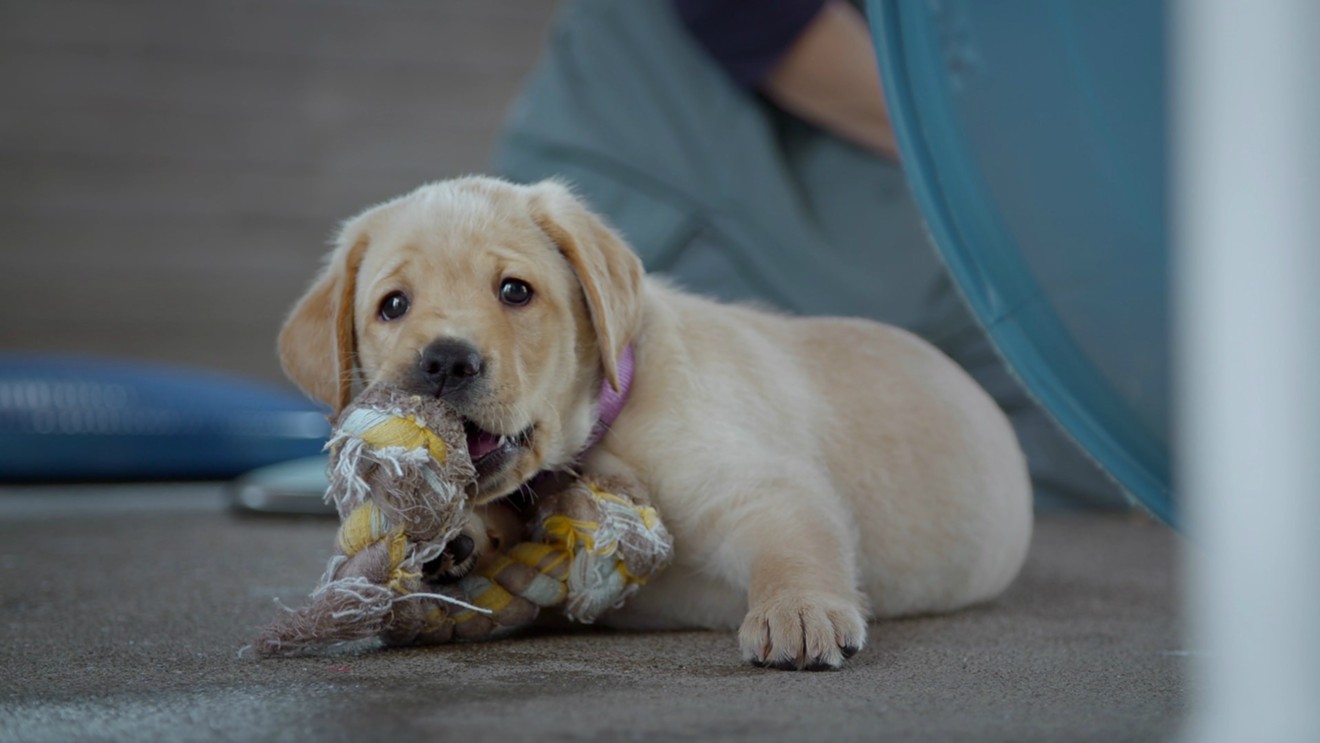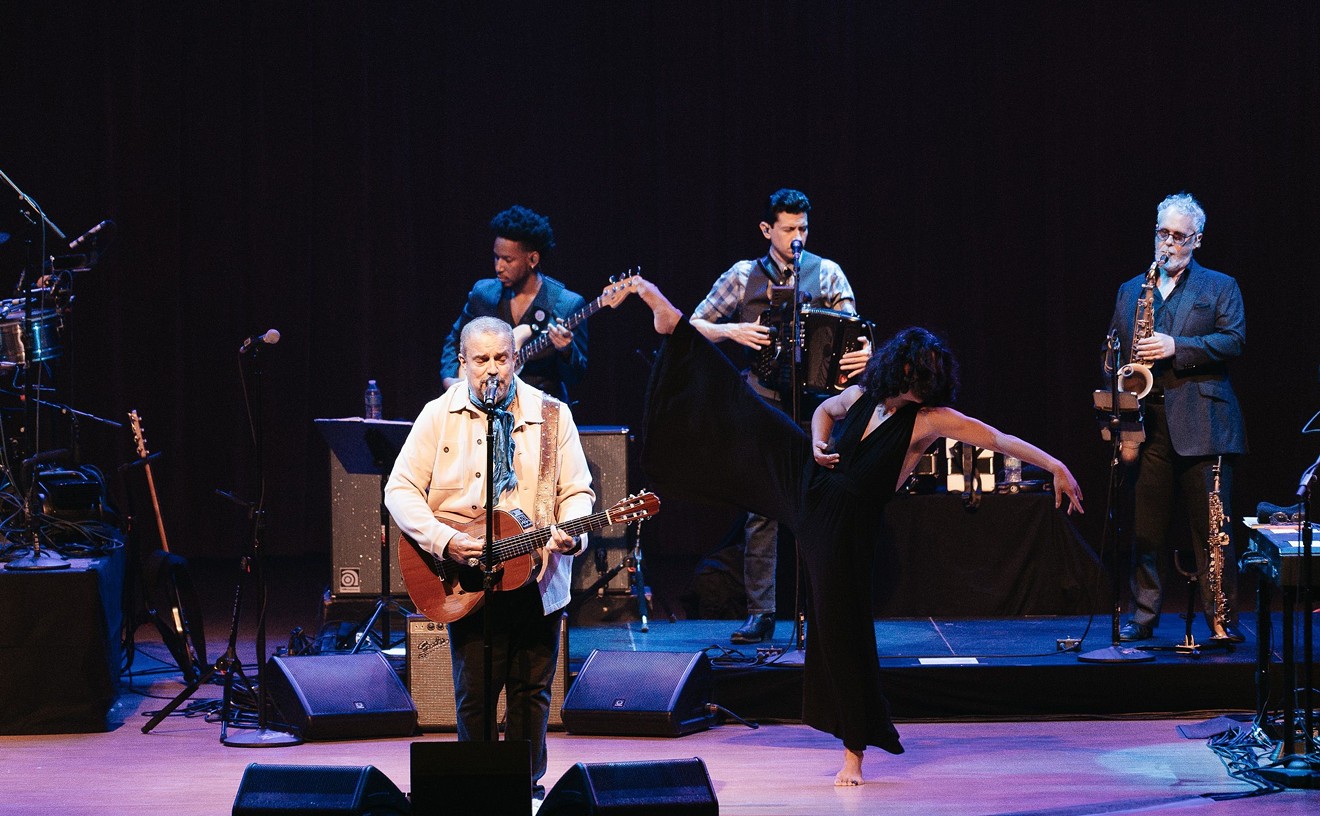It would be a surprise if Pick of the Litter doesn’t win over most viewers. Dana Nachman and Don Hardy’s film, charting the fates of a litter of puppies being trained to become guide dogs, opens with teary testimonials from blind men and women whose lives have been saved by furry companions so smart that they overruled their humans’ commands and avoided oncoming cars or surprise staircases. A heartbeat later, we’re watching Labrador pups tumble forth from their mother, their faces pink and wrinkly, their eyes not quite ready to open up and take in a world that doesn’t deserve such good boys. Yes, they are good boys and good girls, all of them. Such good, good puppies!
It’s a tough movie to review, in its way. The pups, named Primrose and Poppet and Phil and Potomac and Patriot, get dispatched from the organization Guide Dogs for the Blind to the homes of families dedicated to raising them for the first half of their training. As the filmmakers check in intermittently on the progress of all five sweet, sweet, good, good boys and good girls, yes they are, the critic’s mind might start worrying over questions like, “Wait, why did this one rambunctious puppy get moved to a new family?” or “Why don’t the filmmakers slow down and show us what exactly the day-to-day life of these volunteer trainers is like and how much work goes into it?” But, no dopes, the filmmakers instead emphasize the puppies themselves — such good boys and girls, they are! — and the high emotions shared by their temporary human companions at meetings and partings. What are the concerns of coherent storytelling or in-depth documentation when all of these good boys and girls — yes they are! — are leaping and licking and tail-wagging and just being the best?
Some pups get cut — or “career changed” — from the program, usually for behaving like pups. They might get distracted on walks, follow their whims rather than march in lockstep with their human, chase bits of paper or interesting smells or some of the other very, very good boys and girls they meet on their rounds. As the roster of puppies slims, the film becomes more successful at actually showing viewers the rigors of becoming a guide dog, especially once the pups enter the second phase of their training.
Now back at Guide Dogs for the Blind, in San Rafael, California, the last dogs standing must master not just curbs and traffic but also what the trainers call “intelligent disobedience” – when to reject commands from their humans that might, say, send them both into the path of a car or down an elevator shaft. The best good boys and girls are the ones who know that sometimes they must not do what we tell them. The final tests we see the dogs work through are tense and fascinating. And just when your brains starts asking, “Hey, do these trainees even understand that they’re being trained or the very concept of failure?” you’re watching blind adults meet their new guide dogs, who leap up and lick their faces. By then, you’re probably a helpless blubbering pile of tears and good boys and good girls and yes you are, yes you ares.
[
{
"name": "GPT - Billboard - Slot Inline - Content - Labeled - No Desktop",
"component": "16971022",
"insertPoint": "2",
"requiredCountToDisplay": "2"
},{
"name": "Editor Picks",
"component": "15769925",
"insertPoint": "4",
"requiredCountToDisplay": "1"
},{
"name": "Inline Links",
"component": "16575154",
"insertPoint": "8th",
"startingPoint": 8,
"requiredCountToDisplay": "7",
"maxInsertions": 25
},{
"name": "GPT - Rectangle 2x - Slot Auto-select - Labeled",
"component": "15782206",
"insertPoint": "8th",
"startingPoint": 8,
"requiredCountToDisplay": "7",
"maxInsertions": 25
},{
"name": "Inline Links",
"component": "16575154",
"insertPoint": "8th",
"startingPoint": 12,
"requiredCountToDisplay": "11",
"maxInsertions": 25
},{
"name": "GPT - Leaderboard to Tower - Slot Auto-select - Labeled",
"component": "15782207",
"insertPoint": "8th",
"startingPoint": 12,
"requiredCountToDisplay": "11",
"maxInsertions": 25
}
]












